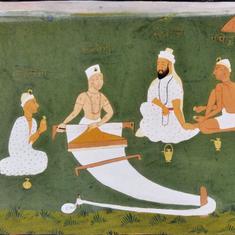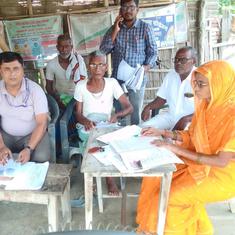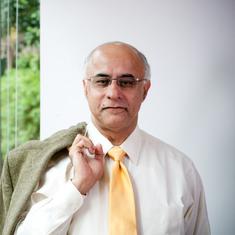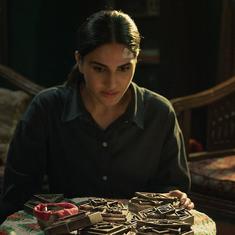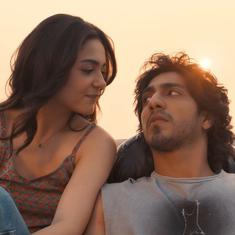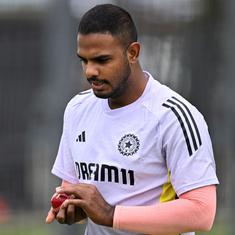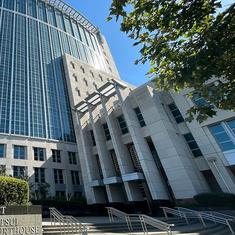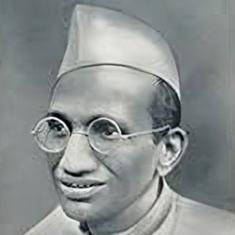Growing up in Punjab, especially Chandigarh, life wasn’t as easy for an aspiring footballer compared to other parts of the country. While one of the latest I-League entrants, Minerva Punjab FC, hail from the region, there wasn’t much else happening in the football circuit in the state.
One academy that has long stood in the region, though, is the St Stephen’s Academy, which was operated by the current Minerva Punjab FC head coach Surinder Singh. Among the many good footballers the academy produced was a shy, yet expressive on the field, defender, Sandesh Jhingan.
The tall lad gave early glimpses of his huge potential at the academy, helping his side reach the South-East Asian finals of the Manchester United Premier Cup. The youngster also represented his city team Chandigarh at the U-19 level and was instrumental in their winning the BC Roy Trophy, a tournament held between state teams at the U-19 level.
It wasn’t long before Jhingan became the talk of the town and with the absence of professional teams in Punjab post the Jagatjit Cotton and Textile Football Club, better known as JCT, era, the then 18-year-old was strife of options to realise his dream of making it big in football. It was a chilly November back in 2011 when Jhingan’s prayers were probably heard as the defender was called up by United Sikkim, the Bhaichung Bhutia co-owned team, for their second-division campaign.
Making an impression
Jhingan impressed one and all and was selected for United Sikkim’s side aiming to break into the top tier of Indian football. He was impressive in the campaign and a pivotal figure in helping Bhutia realise his dream of breaking into the top tier. Jhingan was smug now as United Sikkim made it to the I-League, where millions would watch him. He was well on his way of making it big.
He made a dream debut in the I-League against Salgaocar, as he grabbed the winner in a 3-2 victory for United Sikkim. His performances remained consistent and noteworthy, earning him a national camp call-up soon. What also came was interest from Chinese clubs, but with the India camp being of prime importance, Jhingan had to miss his trials and continued with United Sikkim. The team, though, couldn’t match up to their form of the previous season and were relegated.
Jhingan then had a stint with Mumbai FC on loan from Rangdajied, before debuting in the Indian Super League in 2014 for Kerala Blasters. The ISL was a turning point for Jhingan, who formed a formidable partnership with Cedric Hengbart at the centre of the backline. Although Jhingan had a tryst with the India U-23 side, it was his ISL performance that earned him the senior team call-up. He was awarded the Emerging Player of the ISL award in its maiden season.
After not playing in the I-League in the initial part of the 2014-’15 season, Jhingan made an entry midway and featured in 11 games for Sporting Clube de Goa. But having not played a full season, he returned to Kerala Blasters in 2015 not seemingly as fit as his earlier self.
Playing out of position
There was another stark difference in the season, with Jhingan made to play as right-back. His performances saw a fair dip, as he found it tough to adjust to the new position. His performances for the national team came down a notch as well, even as he got back to his favoured centre-back role. A confused Jhingan was seen rushing into challenges and went in for a slide tackle too many, having the right-back psyche running strong in him. It was all getting mixed up and wasn’t going down too well. Jhingan did improve upon is performances eventually, but he was nowhere near the mark he had set in the previous season.
In the current season, again, Jhingan came on the back of playing a few matches for DSK Shivajians as a centre-back, but was forced to mainly playing as a right-back. Jhingan had early jitters yet again, but grew as the season progressed. Although Cedric Hengbart ruled the roost for Kerala, Jhingan was pretty decent in the season.
Recently, Jhingan put pen to paper for I-League side Bengaluru FC, a big club, and the move seemed pretty good in the first go. However, this might not be the best move for Jhingan.
BFC have a steady centre-back pairing in John Johnson and Juan Gonzalez, which means either Jhingan will get games in between or will have to settle to playing the role of a right-back again. Alhough Jhingan has done fairly well in the position, does it augur well for him considering he is just a makeshift right-back and plays as a centre-back for the national team?
With a number of centre-backs in Anas Edathodika, Robin Gurung, Koushik Sarkar and Subasish Bose waiting in the wings, and the likes of Pritam Kotal and Rino Anto being preferred choices at right-back, could this spell doom for Jhingan, not getting much game time in the centre? Jhingan certainly doesn’t have the kind of pace and ability to track back or curl in whipping crosses to earn him a spot at the right side of defence.
Another possibility for Bengaluru FC could be the revolutionising 3-4-3 formation, with Jhingan playing in the centre, but that would then mean the two-time I-League champions would need to tinker with their lineup upfront. Is that something they are willing to do?
Considering Bengaluru FC adopt a formation of three at the back, there is still a big difference between playing with three central defenders and with two. With three central defenders, the players are expected to occupy different positions while defending, ensuring the gap isn’t too much or too less between them. They line-up differently when playing with just two.
Now that might again go on to affect Jhingan’s performances while playing with a fellow centre-back for the national team. All in all, Bengaluru FC seem to have a fantastic player in Jhingan, but it doesn’t really seem to be the best possible move for the man himself.

